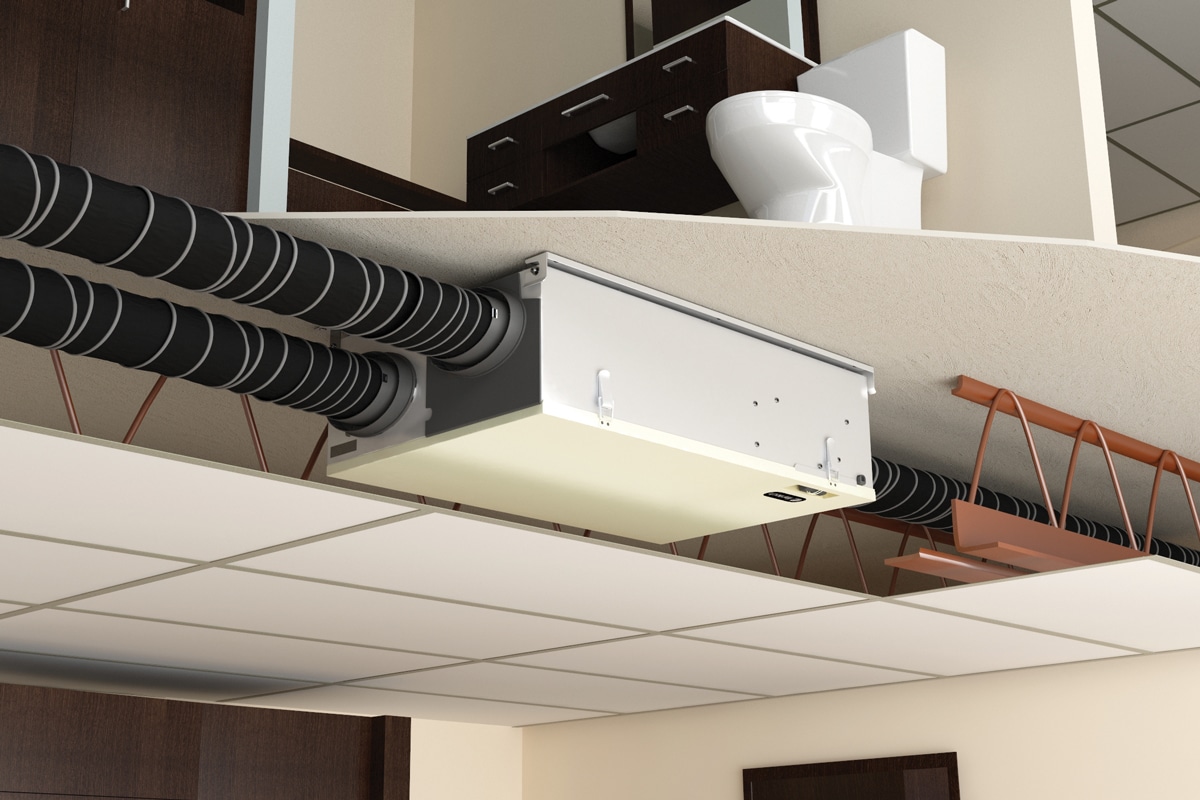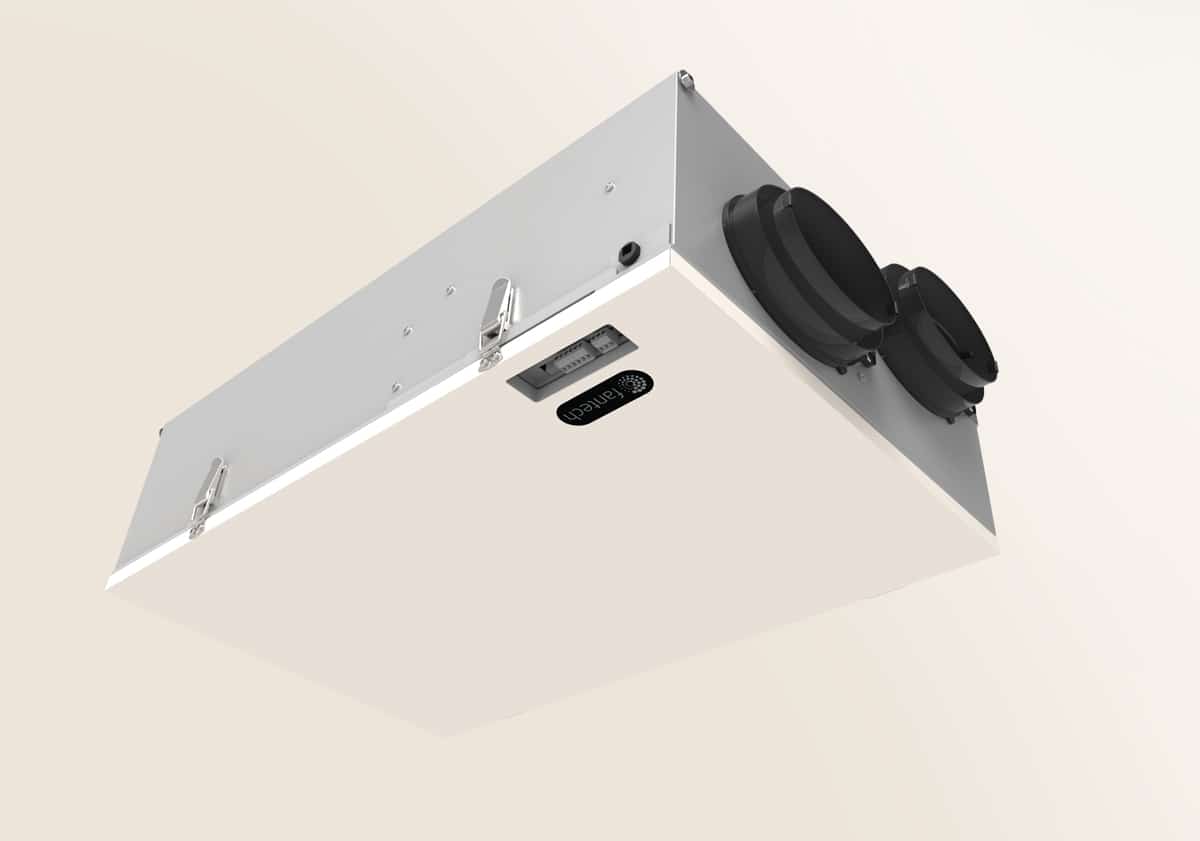
Systemair units come standard at MERV 3, but you have the option to go up to MERV 13. MERV 3 eliminates dust mites, pollen, spray paint dust, textile fibers, carpet fibers, and more. Photo courtesy of Fantech

Bruno Poitras knows the importance of fresh air. As part of the Systemair team, which has long worked with CORE Energy Recovery Solutions, he’s an expert in the inner workings and efficiencies of crossflow exchangers. CORE’s crossflow exchangers, with their patented polymer membranes, allow both sensible and latent energy recovery. They are water washable, have no moving parts, and are low maintenance and easy to access, making them an ideal solution for projects like multi-unit residential buildings as well as schools, health care facilities, and other commercial applications. We talked with Poitras to find out more about how this technology works.
CORE Energy Recovery Solutions’ Exchanger is a key component of Systemair’s fresh air appliances, as it offers up clean air, high performance, and low maintenance.
But what, exactly, does a fresh air appliance do? Our units bring fresh air into your dwelling while removing stale air. This is crucial, as people don’t always realize how much bad air is trapped inside their homes, including volatile organic compounds that may off-gas from your furniture, paint, and carpet. Without proper ventilation, those aren’t going anywhere unless you open a window, and who wants their windows open all year?
We supply fresh air and recover the energy from the air we send outside. Using CORE’s crossflow exchanger, the supply air and exhaust air are conducted perpendicularly to each other, allowing the transfer of energy from one airstream to another without the crossover of contaminants. The air comes inside at a more comfortable temperature than if you opened a window in January, too.

Inside every CORE Energy Recovery Solutions exchanger is CORE’s patented polymer membrane, which transfers both heat and humidity from one air stream to another driven by thermal differences and the partial pressure difference of water vapor between streams. The membrane separates the air streams and has a thin dense polymer barrier layer that allows the water vapor to absorb and permeate through while blocking the transfer of gases, VOCs, and other contaminant compounds. Photo courtesy of Fantech
In multi-unit buildings with our products, you get individual ventilation. While some manufacturers supply a system that ventilates hallways and uses undercuts in doors, that gives you air from hallways rather than from outside. We install in each dwelling so you get fresh air directly from outside.
And why pay to heat or cool your space only to lose that air and pay to heat or cool again? Opening a window or just installing a supply fan and exhaust fan is throwing out that temperature you’ve just paid to temper. We can recover most of that energy.
Maintenance is straightforward. The CORE Exchanger with its polymer membrane is washable. Simply take it out, rinse it, let it dry, and pop it back in every three to six months. The multi-unit residential units also negate the need for an air handler on the roof, so your building has more usable space and no need for duct shafts.
Read more from Fantech and see more gb&d ERV ventilation system stories.

